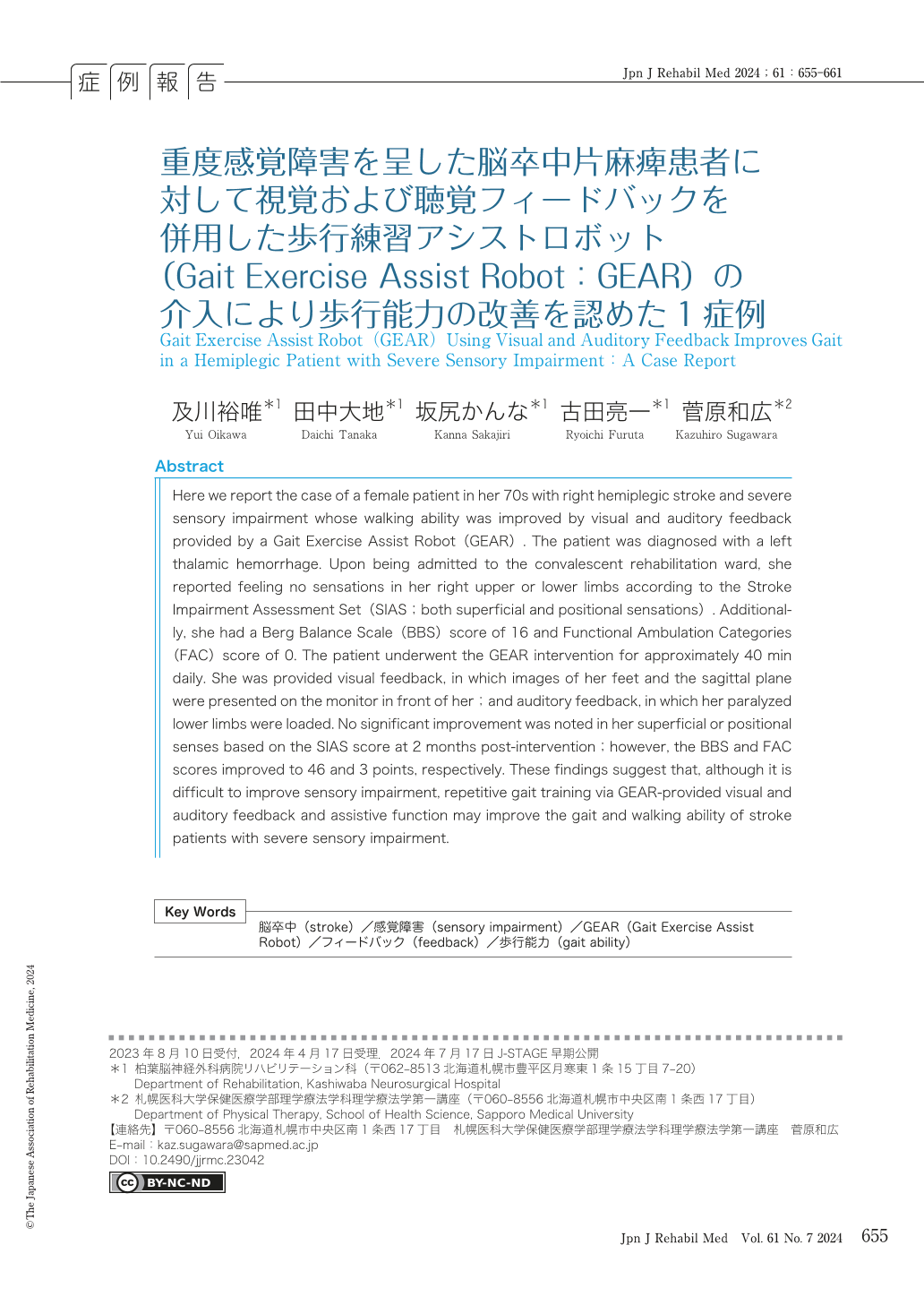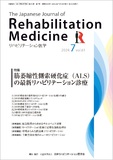Japanese
English
- 販売していません
- Abstract 文献概要
- 1ページ目 Look Inside
- 参考文献 Reference
はじめに
脳卒中を罹患した患者の約半数以上は,触覚,温冷覚,固有覚,痛覚の低下を特徴とする損傷半球と対側上下肢の体性感覚障害を有する1, 2).先行研究において,体性感覚障害を呈した脳卒中患者では体性感覚障害を呈さない脳卒中患者と比較して歩行時の転倒率が高いことが報告されており3),体性感覚障害の程度が麻痺側の上下肢の運動能力に関与しているだけでなく,立位や歩行といった日常生活動作に強く影響する4, 5).
2020年4月に診療報酬に運動量増加機器加算が設定され,歩行練習ロボットの臨床導入が進んでいる.歩行練習アシストロボット(Gait Exercise Assist Robot:GEAR)は脳卒中片麻痺患者が効率よく歩行練習を行う環境を提供する練習支援ロボット6)として近年多くの施設で導入され,当院においても2021年11月に導入された.GEARは足底部に圧力センサを搭載した麻痺側に装着する長下肢ロボットであり,圧力センサと膝関節角度から適切なタイミングで膝関節の屈曲・伸展をアシストできる.また,対象者の前面に大型モニターがあり,荷重による音声機能が搭載されており,視覚と聴覚による歩容のフィードバックが行える機構をもつ7).以上のことから,GEARを使用した歩行練習は運動学習に必要な転移性・動機づけ,練習量,フィードバック,難易度などの変数を用いて効率よく運動学習を促すことができる8).
今回,視床出血後に重度感覚障害を呈し,平地歩行では長下肢装具(long leg brace:LLB)を用いて重度の介助を要したが,視覚および聴覚フィードバックを併用したGEAR介入により,歩行能力の改善を図ることができた症例を経験した.その症例についてのGEAR介入内容と経過について文献的考察を加え報告する.
Abstract Here we report the case of a female patient in her 70s with right hemiplegic stroke and severe sensory impairment whose walking ability was improved by visual and auditory feedback provided by a Gait Exercise Assist Robot (GEAR).The patient was diagnosed with a left thalamic hemorrhage. Upon being admitted to the convalescent rehabilitation ward, she reported feeling no sensations in her right upper or lower limbs according to the Stroke Impairment Assessment Set (SIAS;both superficial and positional sensations).Additionally, she had a Berg Balance Scale (BBS) score of 16 and Functional Ambulation Categories (FAC) score of 0. The patient underwent the GEAR intervention for approximately 40 min daily. She was provided visual feedback, in which images of her feet and the sagittal plane were presented on the monitor in front of her;and auditory feedback, in which her paralyzed lower limbs were loaded. No significant improvement was noted in her superficial or positional senses based on the SIAS score at 2 months post-intervention;however, the BBS and FAC scores improved to 46 and 3 points, respectively. These findings suggest that, although it is difficult to improve sensory impairment, repetitive gait training via GEAR-provided visual and auditory feedback and assistive function may improve the gait and walking ability of stroke patients with severe sensory impairment.

Copyright © 2024, The Japanese Association of Rehabilitation Medicine. All rights reserved.


